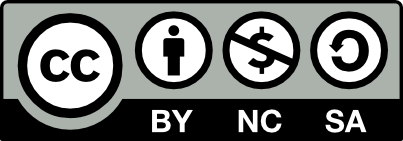Written by Kshitij Paresh Desai ,
Environmental Engineer (Environmental Impact Assessment)
December 2024
Introduction:
India’s 7,517 km coastline boasts remarkable biodiversity, yet it faces mounting pressures due to rapid economic growth and the extensive use of modern technologies. These developments increasingly strain fragile coastal ecosystems. The Coastal Zone Regulation Notification, 2011, aims to address these challenges by conserving and protecting coastal regions, safeguarding the livelihoods of vulnerable communities residing in these areas, and promoting sustainable development along the coasts.
Evolution of Coastal Regulation Zone (CRZ) Policies:
On February 19, 1991, the Ministry of Environment and Forests (MOEF), India, introduced a notification under Section 3 of the Environment Protection Act, 1986, aimed at regulating developmental activities along the country’s coastline.
Despite varying conditions such as biological diversity and development levels, the 1991 Notification established uniform regulations for managing vulnerable coastal areas.
Building upon this framework, the Coastal Regulation Zone (CRZ) Notification of 2011 introduced updated measures to safeguard the interests of coastal communities, including those in Mumbai, Kerala, Goa, and the ecologically fragile Sundarbans. It emphasized the need to curb pollution in coastal areas, particularly the harmful practice of discharging untreated waste into coastal waters.
The 2011 Notification mandated that:
Within two years of its enactment, measures must be implemented to end the discharge of untreated waste into coastal waters, supported by an actionable plan addressing coastal pollution.
The Ministry of Environment and Forests would provide financial and technical support for executing these plans.
Within one year of its issuance, the dumping of solid waste in coastal areas must be completely phased out.
The primary objectives of the CRZ Notification, 2011, are:
Ensuring livelihood security for fishing and local communities living in coastal areas.
Protecting and conserving coastal ecosystems.
Promoting sustainable development based on scientific principles.
Drawbacks of CRZ Notification 1991:
The 1991 Coastal Regulation Zone (CRZ) Notification established uniform regulations for managing India’s coastline. However, it overlooked the inherent diversity of coastal regions, including variations in resources, biodiversity, and water body conditions. India’s coastline exhibits distinct geological characteristics, which the notification failed to address. Furthermore, the fragile ecosystems of these areas display unique geomorphological features and demographic patterns that were not adequately considered.
The notification lacked several critical elements, such as:
Clearance Timelines: No specific timelines were set for obtaining CRZ clearance.
Application Mechanisms: It did not outline formats or processes for submitting clearance applications.
Enforcement and Monitoring: There was no robust system to enforce regulations or monitor compliance post-clearance.
Pollution Control Measures: It failed to provide mechanisms to address pollution in coastal areas.
Additionally, the regulations posed challenges for communities residing in sensitive coastal regions, including slum dwellers, economically disadvantaged groups in cities like Mumbai, Kerala, and Goa, and traditional coastal inhabitants.
Over time, the 1991 Notification underwent several amendments and clarifications through office orders issued by the Ministry of Environment and Forests to address these gaps and provide more specific guidance.
Strengths of CRZ Notification 2011:
The 2011 Notification broadened the Coastal Regulation Zone (CRZ) to cover territorial waters. To protect the marine and coastal ecosystems of the Andaman & Nicobar Islands and Lakshadweep, a separate draft Notification was introduced under the Environment (Protection) Act, 1986. Moreover, the 2011 Notification introduced the “hazard line” concept to identify at-risk marine and coastal zones, aiming to safeguard communities, their resources, and coastal infrastructure.
The Notification also established a clear process for obtaining approvals for development projects within CRZ areas, alongside a strong system for post-clearance monitoring and enforcement. It highlighted “Areas Requiring Special Consideration” to protect severely impacted coastal and marine environments in regions like Goa, Kerala, Greater Mumbai, and the Sundarbans, which are categorized as Extremely Vulnerable Coastal Areas. Additionally, it provided directives for states to create Coastal Management Plans.
The CRZ classification system from the 1991 Notification was largely retained:
CRZ-I: Ecologically sensitive areas.
CRZ-II: Built-up areas in towns and cities.
CRZ-III: Rural areas.
CRZ-IV: Coastal waters that stretch up to twelve nautical miles offshore.
Under the 2011 Notification, CRZ-IV was revised to encompass territorial waters and water bodies affected by tidal influences.
4.1 Coastal Areas Under Coastal Regulation Zone Category I
The 2011 CRZ Notification designates Category I (CRZ-I) areas for their ecological sensitivity, including mangroves, corals, sand dunes, mudflats, reserve forests, national parks, wildlife habitats, bird nesting grounds, seagrass beds, salt marshes, turtle nesting sites, and heritage areas.
Permissible Activities in CRZ-I:
New construction is largely prohibited, except for essential developments such as:
Department of Atomic Energy facilities.
Cyclone monitoring installations and weather radars, without obstructing water flow between the LTL and HTL.
Trans-harbor sea links, roads, and greenfield airports like Navi Mumbai.
In non-ecologically vulnerable areas, additional activities can include:
Natural gas exploration and extraction.
Building community infrastructure like schools, dispensaries, and shelters.
Developing essential services such as water, drainage, and sewerage systems.
Salt harvesting, desalination plants, and storage of non-hazardous cargo within notified ports.
4.2 Coastal Areas under Coastal Regulation Zone Category II
CRZ-II covers areas developed up to or near the shoreline within municipal limits.
Permissible Activities:
Construction is allowed only on the landward side of existing roads.
Building permissions follow Floor Space Index (FSI) or Floor Area Ratio (FAR) norms and local planning regulations.
Authorized buildings can be reconstructed without changing their use, adhering to existing FSI or FAR norms.
Storage facilities for LNG and petroleum, desalination plants, and storage of non-hazardous cargo are allowed in designated ports.
4.3 Coastal Areas under Coastal Regulation Zone (CRZ) Category III
CRZ-III includes areas that are outside of CRZ-I and CRZ-II, covering both pristine urban and rural regions.
Permissible Activities:
A. 0-200 meters from the High Tide Line (HTL) – Area designated as a No Development Zone.
Degasification of petroleum products and LNG.
Production of salt and mining of rare minerals.
Agricultural, horticultural, and forestry activities, along with the creation of parks and playgrounds.
Generation of power from non-conventional sources and projects by the Department of Atomic Energy.
200-500 meters from HTL:
Construction and repair of housing for local communities.
Tourism initiatives, such as the Navi Mumbai greenfield airport.
Establishment of desalination plants and storage of non-hazardous materials.
4.4 Coastal Areas under Coastal Regulation Zone (CRZ) Category IV
CRZ-IV includes sea areas from the low tide line (LTL) to territorial waters, along with tidal-influenced water bodies.
Permissible Activities:
Traditional fishing communities can continue their activities.
Dumping untreated sewage, effluents, or solid waste is prohibited.
A sewage treatment plan must be prepared within one year and implemented within two years. This classification protects coastal areas while enabling sustainable development.
Clearance Procedure
The 1991 Notification did not provide a clear CRZ clearance process, whereas the 2011 Notification introduced a comprehensive procedure.
Steps for Clearance:
Submission of Proposal:
The project proponent must submit the proposal to the relevant State Coastal Zone Management Authority (SCZMA), accompanied by necessary documents, including:
Form-1 (as per Annexure-IV of the Notification).
A detailed Environmental Impact Assessment (EIA).
Studies covering port and foreshore requirements as per Ministry of Environment and Forest (MoEF) guidelines.
Disaster and Risk Management Reports.
A Coastal Regulation Zone (CRZ) map displaying a 7 km radius around the project site, clearly indicating CRZ categories (I, II, III, and IV).
A No Objection Certificate (NOC) from the concerned Pollution Control Board or committee.
Examination of Documents:
The SCZMA reviews submitted documents for compliance with approved rules and
Recommendations:
The SCZMA must submit recommendations to the MoEF or State Government within 60 days of receiving the proposal.
Final Decision:
The MoEF or State Government must evaluate and decide on the project within 60 days of receiving SCZMA’s recommendations, as mandated by the notification.
This structured approach ensures transparency, accountability, and adherence to environmental and regulatory standards for projects within the Coastal Regulation Zone.
6.Post Clearance Mechanism
The following post-clearance procedures are initiated once clearance, as mentioned above, has been granted to projects:
The Notification mandates that compliance reports be submitted twice a year, on June 1st and December 31st, in both hard and soft copies, to the relevant regulatory authority.
According to the Notification, the compliance reports, once submitted, are considered public documents.
If any individual requests a copy of the report from the concerned regulatory authority, the authority is required to provide it.
Additionally, the relevant authority is required to publish the latest compliance report on its official website. This report will remain valid for five years from the date the clearance is issued.
Mechanism of Enforcement:
The CRZ Notifications of 1991 and 2011 differ mainly in enforcement. The 1991 Notification lacked an enforcement mechanism, leading to violations, while the 2011 Notification introduces clear timelines, corrective actions, and stronger institutional capacities. The MoEF and Coastal Zone Management Authorities at local, state, and national levels are now more accountable for ensuring compliance.
Conclusion:
The 1991 Notification set basic regulations for coastal protection, while the 2011 Notification added provisions to address community challenges, including those in slums and the Sundarbans. It also outlines a clear approval process for CRZ development projects, with monitoring and enforcement mechanisms. Effective coordination and collective responsibility from individuals and states are essential to preserving vulnerable coastal areas.
References:
Agnihotri, V.K. Coastal Environment and Development. Oxford University Press, 2018.
Indian Ministry of Environment and Forests. Coastal Regulation Zone Notification, 1991. Ministry of Environment and Forests, 1991.
Indian Ministry of Environment and Forests. Coastal Regulation Zone Notification, 2011. Ministry of Environment and Forests, 2011.
Joshi, Arvind S. Coastal Zone Management in India: A Legal Perspective. Environmental Law Review, 2021.
Kumar, Ramesh. Environmental Law in India. LexisNexis, 2017.
Sharma, Neha. “Coastal Zone Management in India: Challenges and Strategies.” Journal of Environmental Law, 2020.
Verma, Manish. “Coastal Development and Environmental Sustainability.” India Environmental Portal, May 22, 2022, https://www.indiaenvironmentportal.org/coastal-development-sustainability.
Verma, Manish. “The Role of CRZ in Coastal Protection.” India Environment Portal, March 15, 2023, https://www.indiaenvironmentportal.org/coastal-protection-crz.


